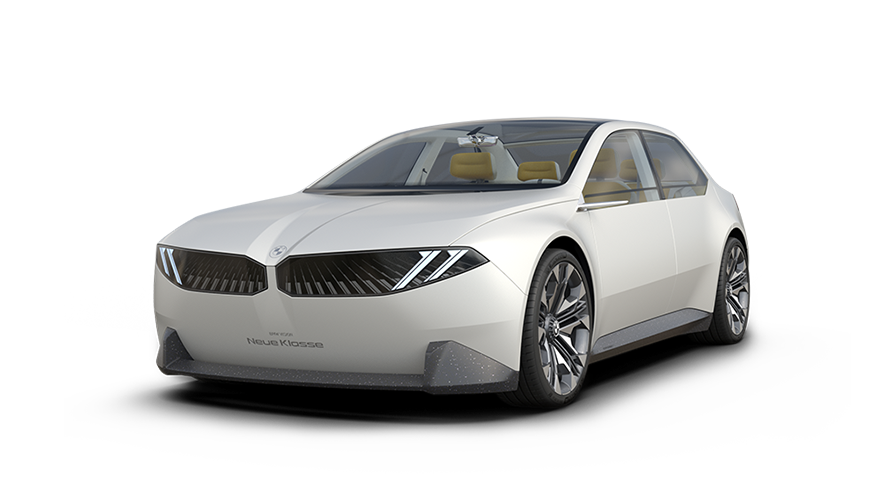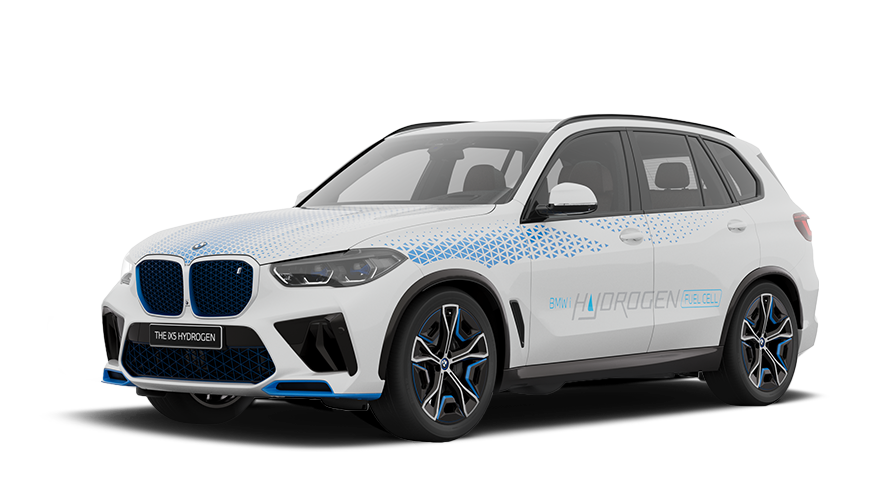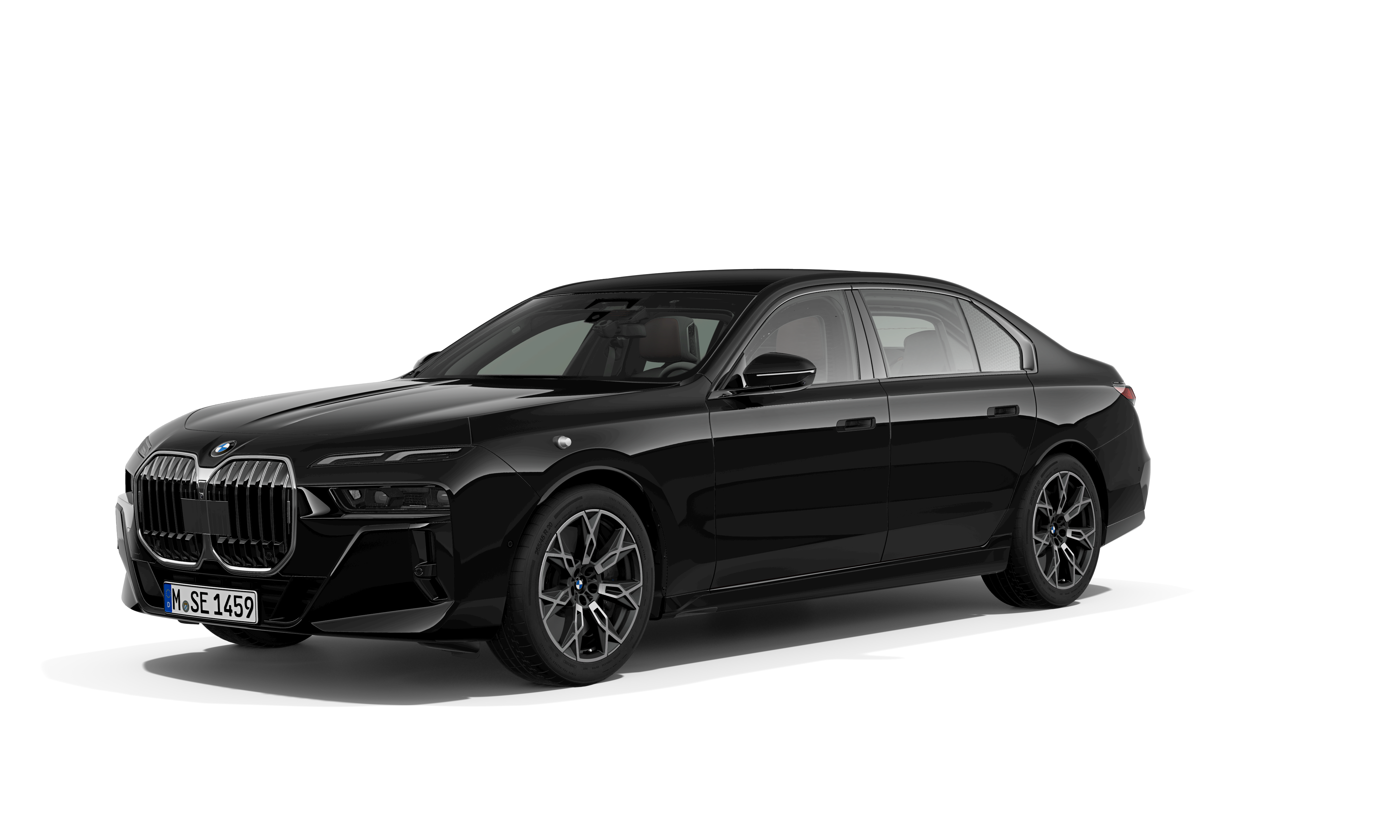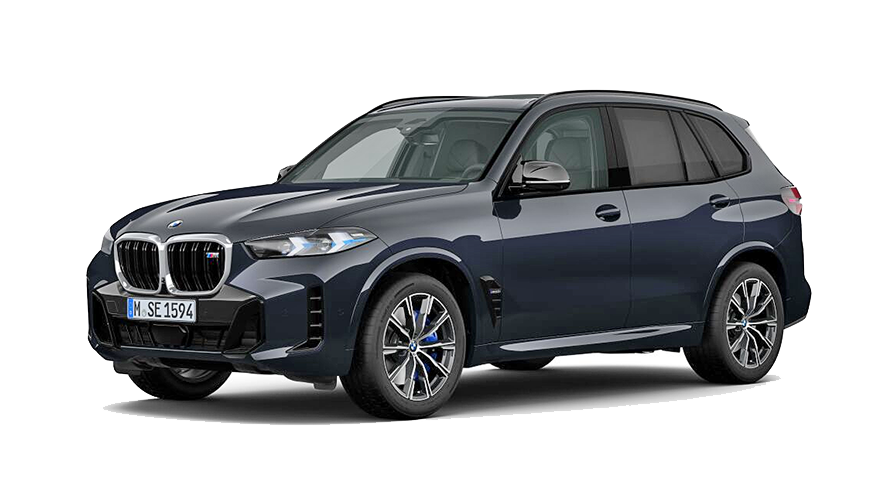Discover and configure all BMW new car models.
Explore our latest car models to find the smart technology, innovative features and engine type that’s right for you. Simply compare, build and locate your perfect new BMW.
Fully Electric Cars
Electric
-
From £75,405
Illustrations show optional equipment at an additional cost. The prices given are non-binding recommendations from the manufacturer including 19% VAT excluding transfer costs. Changes and omissions excepted. Binding price information can be obtained from your BMW partner.
Electric
-
From £114,305
Illustrations show optional equipment at an additional cost. The prices given are non-binding recommendations from the manufacturer including 19% VAT excluding transfer costs. Changes and omissions excepted. Binding price information can be obtained from your BMW partner.
Electric
-
From £58,755
Illustrations show optional equipment at an additional cost. The prices given are non-binding recommendations from the manufacturer including 19% VAT excluding transfer costs. Changes and omissions excepted. Binding price information can be obtained from your BMW partner.
Electric
-
From £49,705
Illustrations show optional equipment at an additional cost. The prices given are non-binding recommendations from the manufacturer including 19% VAT excluding transfer costs. Changes and omissions excepted. Binding price information can be obtained from your BMW partner.
Electric
-
From £43,555
Illustrations show optional equipment at an additional cost. The prices given are non-binding recommendations from the manufacturer including 19% VAT excluding transfer costs. Changes and omissions excepted. Binding price information can be obtained from your BMW partner.
Electric
-
From £101,865
Illustrations show optional equipment at an additional cost. The prices given are non-binding recommendations from the manufacturer including 19% VAT excluding transfer costs. Changes and omissions excepted. Binding price information can be obtained from your BMW partner.
Electric
-
From £101,865
Illustrations show optional equipment at an additional cost. The prices given are non-binding recommendations from the manufacturer including 19% VAT excluding transfer costs. Changes and omissions excepted. Binding price information can be obtained from your BMW partner.
Electric
-
From £67,795
Illustrations show optional equipment at an additional cost. The prices given are non-binding recommendations from the manufacturer including 19% VAT excluding transfer costs. Changes and omissions excepted. Binding price information can be obtained from your BMW partner.
Electric
-
From £97,845
Illustrations show optional equipment at an additional cost. The prices given are non-binding recommendations from the manufacturer including 19% VAT excluding transfer costs. Changes and omissions excepted. Binding price information can be obtained from your BMW partner.
Electric
-
From £70,045
Illustrations show optional equipment at an additional cost. The prices given are non-binding recommendations from the manufacturer including 19% VAT excluding transfer costs. Changes and omissions excepted. Binding price information can be obtained from your BMW partner.
Electric
-
From £99,995
Illustrations show optional equipment at an additional cost. The prices given are non-binding recommendations from the manufacturer including 19% VAT excluding transfer costs. Changes and omissions excepted. Binding price information can be obtained from your BMW partner.
Electric
-
From £51,370
Illustrations show optional equipment at an additional cost. The prices given are non-binding, non-cartelized recommendations from the manufacturer including 19% VAT excluding transfer costs. Changes and omissions excepted. Binding price information can be obtained from your BMW partner.
Electric
-
From £71,525
Illustrations show optional equipment at an additional cost. The prices given are non-binding recommendations from the manufacturer including 19% VAT excluding transfer costs. Changes and omissions excepted. Binding price information can be obtained from your BMW partner.
Plug-in Hybrid Cars
Hybrid
-
From £112,820
Illustrations show optional equipment at an additional cost. The prices given are non-binding recommendations from the manufacturer including 19% VAT excluding transfer costs. Changes and omissions excepted. Binding price information can be obtained from your BMW partner.
Hybrid
-
From £82,255
Illustrations show optional equipment at an additional cost. The prices given are non-binding recommendations from the manufacturer including 19% VAT excluding transfer costs. Changes and omissions excepted. Binding price information can be obtained from your BMW partner.
Hybrid
-
From £60,140
Illustrations show optional equipment at an additional cost. The prices given are non-binding recommendations from the manufacturer including 19% VAT excluding transfer costs. Changes and omissions excepted. Binding price information can be obtained from your BMW partner.
Hybrid
-
From £42,870
Illustrations show optional equipment at an additional cost. The prices given are non-binding recommendations from the manufacturer including 19% VAT excluding transfer costs. Changes and omissions excepted. Binding price information can be obtained from your BMW partner.
Hybrid
-
From £105,710
Illustrations show optional equipment at an additional cost. The prices given are non-binding recommendations from the manufacturer including 19% VAT excluding transfer costs. Changes and omissions excepted. Binding price information can be obtained from your BMW partner.
Hybrid
-
From £105,710
Illustrations show optional equipment at an additional cost. The prices given are non-binding recommendations from the manufacturer including 19% VAT excluding transfer costs. Changes and omissions excepted. Binding price information can be obtained from your BMW partner.
Hybrid
Hybrid
Hybrid
-
From £61,905
Illustrations show optional equipment at an additional cost. The prices given are non-binding recommendations from the manufacturer including 19% VAT excluding transfer costs. Changes and omissions excepted. Binding price information can be obtained from your BMW partner.
Hybrid
Hybrid
-
From £47,185
Illustrations show optional equipment at an additional cost. The prices given are non-binding recommendations from the manufacturer including 19% VAT excluding transfer costs. Changes and omissions excepted. Binding price information can be obtained from your BMW partner.
Hybrid
-
From £48,985
Illustrations show optional equipment at an additional cost. The prices given are non-binding recommendations from the manufacturer including 19% VAT excluding transfer costs. Changes and omissions excepted. Binding price information can be obtained from your BMW partner.
Hybrid
-
From £40,290
Illustrations show optional equipment at an additional cost. The prices given are non-binding recommendations from the manufacturer including 19% VAT excluding transfer costs. Changes and omissions excepted. Binding price information can be obtained from your BMW partner.
Petrol Cars
Petrol
-
From £93,160
Illustrations show optional equipment at an additional cost. The prices given are non-binding recommendations from the manufacturer including 19% VAT excluding transfer costs. Changes and omissions excepted. Binding price information can be obtained from your BMW partner.
Petrol
-
From £118,105
Illustrations show optional equipment at an additional cost. The prices given are non-binding recommendations from the manufacturer including 19% VAT excluding transfer costs. Changes and omissions excepted. Binding price information can be obtained from your BMW partner.
Petrol
-
From £84,215
Illustrations show optional equipment at an additional cost. The prices given are non-binding recommendations from the manufacturer including 19% VAT excluding transfer costs. Changes and omissions excepted. Binding price information can be obtained from your BMW partner.
Petrol
-
From £103,735
Illustrations show optional equipment at an additional cost. The prices given are non-binding recommendations from the manufacturer including 19% VAT excluding transfer costs. Changes and omissions excepted. Binding price information can be obtained from your BMW partner.
Petrol
-
From £139,895
Illustrations show optional equipment at an additional cost. The prices given are non-binding recommendations from the manufacturer including 19% VAT excluding transfer costs. Changes and omissions excepted. Binding price information can be obtained from your BMW partner.
Petrol
-
From £100,910
Illustrations show optional equipment at an additional cost. The prices given are non-binding recommendations from the manufacturer including 19% VAT excluding transfer costs. Changes and omissions excepted. Binding price information can be obtained from your BMW partner.
Petrol
-
From £137,130
Illustrations show optional equipment at an additional cost. The prices given are non-binding recommendations from the manufacturer including 19% VAT excluding transfer costs. Changes and omissions excepted. Binding price information can be obtained from your BMW partner.
Petrol
Petrol
Petrol
-
From £53,305
Illustrations show optional equipment at an additional cost. The prices given are non-binding recommendations from the manufacturer including 19% VAT excluding transfer costs. Changes and omissions excepted. Binding price information can be obtained from your BMW partner.
Petrol
-
From £73,715
Illustrations show optional equipment at an additional cost. The prices given are non-binding recommendations from the manufacturer including 19% VAT excluding transfer costs. Changes and omissions excepted. Binding price information can be obtained from your BMW partner.
Petrol
-
From £43,880
Illustrations show optional equipment at an additional cost. The prices given are non-binding recommendations from the manufacturer including 19% VAT excluding transfer costs. Changes and omissions excepted. Binding price information can be obtained from your BMW partner.
Petrol
-
From £53,915
Illustrations show optional equipment at an additional cost. The prices given are non-binding recommendations from the manufacturer including 19% VAT excluding transfer costs. Changes and omissions excepted. Binding price information can be obtained from your BMW partner.
Petrol
-
From £37,525
Illustrations show optional equipment at an additional cost. The prices given are non-binding recommendations from the manufacturer including 19% VAT excluding transfer costs. Changes and omissions excepted. Binding price information can be obtained from your BMW partner.
Petrol
-
From £52,485
Illustrations show optional equipment at an additional cost. The prices given are non-binding recommendations from the manufacturer including 19% VAT excluding transfer costs. Changes and omissions excepted. Binding price information can be obtained from your BMW partner.
Petrol
Petrol
Petrol
Petrol
-
From £53,090
Illustrations show optional equipment at an additional cost. The prices given are non-binding recommendations from the manufacturer including 19% VAT excluding transfer costs. Changes and omissions excepted. Binding price information can be obtained from your BMW partner.
Petrol
-
From £55,375
Illustrations show optional equipment at an additional cost. The prices given are non-binding recommendations from the manufacturer including 19% VAT excluding transfer costs. Changes and omissions excepted. Binding price information can be obtained from your BMW partner.
Petrol
-
From £46,160
Illustrations show optional equipment at an additional cost. The prices given are non-binding recommendations from the manufacturer including 19% VAT excluding transfer costs. Changes and omissions excepted. Binding price information can be obtained from your BMW partner.
Petrol
-
From £63,335
Illustrations show optional equipment at an additional cost. The prices given are non-binding recommendations from the manufacturer including 19% VAT excluding transfer costs. Changes and omissions excepted. Binding price information can be obtained from your BMW partner.
Petrol
-
From £93,135
Illustrations show optional equipment at an additional cost. The prices given are non-binding recommendations from the manufacturer including 19% VAT excluding transfer costs. Changes and omissions excepted. Binding price information can be obtained from your BMW partner.
Petrol
-
From £47,790
Illustrations show optional equipment at an additional cost. The prices given are non-binding recommendations from the manufacturer including 19% VAT excluding transfer costs. Changes and omissions excepted. Binding price information can be obtained from your BMW partner.
Petrol
-
From £64,160
Illustrations show optional equipment at an additional cost. The prices given are non-binding recommendations from the manufacturer including 19% VAT excluding transfer costs. Changes and omissions excepted. Binding price information can be obtained from your BMW partner.
Petrol
-
From £53,785
Illustrations show optional equipment at an additional cost. The prices given are non-binding recommendations from the manufacturer including 19% VAT excluding transfer costs. Changes and omissions excepted. Binding price information can be obtained from your BMW partner.
Petrol
-
From £70,145
Illustrations show optional equipment at an additional cost. The prices given are non-binding recommendations from the manufacturer including 19% VAT excluding transfer costs. Changes and omissions excepted. Binding price information can be obtained from your BMW partner.
Petrol
-
From £97,220
Illustrations show optional equipment at an additional cost. The prices given are non-binding recommendations from the manufacturer including 19% VAT excluding transfer costs. Changes and omissions excepted. Binding price information can be obtained from your BMW partner.
Petrol
-
From £41,925
Illustrations show optional equipment at an additional cost. The prices given are non-binding recommendations from the manufacturer including 19% VAT excluding transfer costs. Changes and omissions excepted. Binding price information can be obtained from your BMW partner.
Petrol
-
From £62,425
Illustrations show optional equipment at an additional cost. The prices given are non-binding recommendations from the manufacturer including 19% VAT excluding transfer costs. Changes and omissions excepted. Binding price information can be obtained from your BMW partner.
Petrol
-
From £91,315
Illustrations show optional equipment at an additional cost. The prices given are non-binding recommendations from the manufacturer including 19% VAT excluding transfer costs. Changes and omissions excepted. Binding price information can be obtained from your BMW partner.
Petrol
-
From £44,575
Illustrations show optional equipment at an additional cost. The prices given are non-binding recommendations from the manufacturer including 19% VAT excluding transfer costs. Changes and omissions excepted. Binding price information can be obtained from your BMW partner.
Petrol
-
From £64,265
Illustrations show optional equipment at an additional cost. The prices given are non-binding recommendations from the manufacturer including 19% VAT excluding transfer costs. Changes and omissions excepted. Binding price information can be obtained from your BMW partner.
Petrol
-
From £126,275
Illustrations show optional equipment at an additional cost. The prices given are non-binding recommendations from the manufacturer including 19% VAT excluding transfer costs. Changes and omissions excepted. Binding price information can be obtained from your BMW partner.
Petrol
-
From £93,585
Illustrations show optional equipment at an additional cost. The prices given are non-binding recommendations from the manufacturer including 19% VAT excluding transfer costs. Changes and omissions excepted. Binding price information can be obtained from your BMW partner.
Petrol
-
From £39,820
Illustrations show optional equipment at an additional cost. The prices given are non-binding recommendations from the manufacturer including 19% VAT excluding transfer costs. Changes and omissions excepted. Binding price information can be obtained from your BMW partner.
Petrol
-
From £50,165
Illustrations show optional equipment at an additional cost. The prices given are non-binding recommendations from the manufacturer including 19% VAT excluding transfer costs. Changes and omissions excepted. Binding price information can be obtained from your BMW partner.
Petrol
-
From £70,095
Illustrations show optional equipment at an additional cost. The prices given are non-binding recommendations from the manufacturer including 19% VAT excluding transfer costs. Changes and omissions excepted. Binding price information can be obtained from your BMW partner.
Petrol
-
From £36,555
Illustrations show optional equipment at an additional cost. The prices given are non-binding recommendations from the manufacturer including 19% VAT excluding transfer costs. Changes and omissions excepted. Binding price information can be obtained from your BMW partner.
Petrol
-
From £46,600
Illustrations show optional equipment at additional cost. The prices given are non-binding, non-cartelized recommendations from the manufacturer including VAT and standard consumption tax (NOVA) based on the base model without optional equipment, excluding transfer costs. Errors and omissions excepted. Changes and omissions excepted. Binding price information can be obtained from your BMW partner.
Petrol
-
From £36,110
Illustrations show optional extras at extra cost. The prices given are non-binding, non-cartelized recommendations from the manufacturer including VAT and standard consumption tax (NOVA) based on the base model without optional equipment, excluding transfer costs. Errors and omissions excepted. Changes and omissions excepted. Binding price information can be obtained from your BMW partner.
Petrol
-
From £32,625
Illustrations show optional equipment at an additional cost. The prices given are non-binding recommendations from the manufacturer including 19% VAT excluding transfer costs. Changes and omissions excepted. Binding price information can be obtained from your BMW partner.
Petrol
-
From £45,550
Illustrations show optional equipment at an additional cost. The prices given are non-binding recommendations from the manufacturer including 19% VAT excluding transfer costs. Changes and omissions excepted. Binding price information can be obtained from your BMW partner.
Petrol
-
From £46,600
Illustrations show optional equipment at an additional cost. The prices given are non-binding recommendations from the manufacturer including 19% VAT excluding transfer costs. Changes and omissions excepted. Binding price information can be obtained from your BMW partner.
Petrol
-
From £59,365
Illustrations show optional equipment at an additional cost. The prices given are non-binding recommendations from the manufacturer including 19% VAT excluding transfer costs. Changes and omissions excepted. Binding price information can be obtained from your BMW partner.
Diesel Cars
Diesel
-
From £94,255
Illustrations show optional equipment at an additional cost. The prices given are non-binding recommendations from the manufacturer including 19% VAT excluding transfer costs. Changes and omissions excepted. Binding price information can be obtained from your BMW partner.
Diesel
-
From £82,045
Illustrations show optional equipment at an additional cost. The prices given are non-binding recommendations from the manufacturer including 19% VAT excluding transfer costs. Changes and omissions excepted. Binding price information can be obtained from your BMW partner.
Diesel
-
From £75,780
Illustrations show optional equipment at an additional cost. The prices given are non-binding recommendations from the manufacturer including 19% VAT excluding transfer costs. Changes and omissions excepted. Binding price information can be obtained from your BMW partner.
Diesel
Diesel
-
From £54,540
Illustrations show optional equipment at an additional cost. The prices given are non-binding recommendations from the manufacturer including 19% VAT excluding transfer costs. Changes and omissions excepted. Binding price information can be obtained from your BMW partner.
Diesel
-
From £38,815
Illustrations show optional equipment at an additional cost. The prices given are non-binding recommendations from the manufacturer including 19% VAT excluding transfer costs. Changes and omissions excepted. Binding price information can be obtained from your BMW partner.




